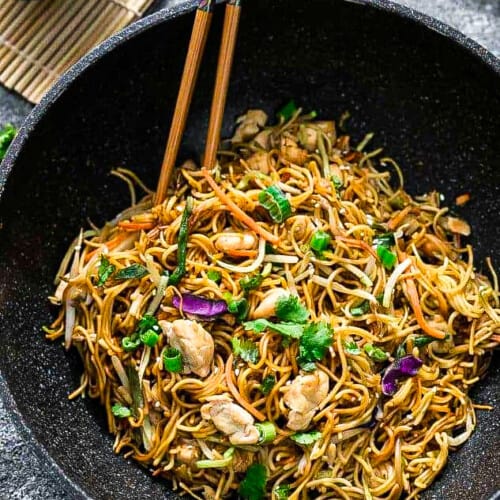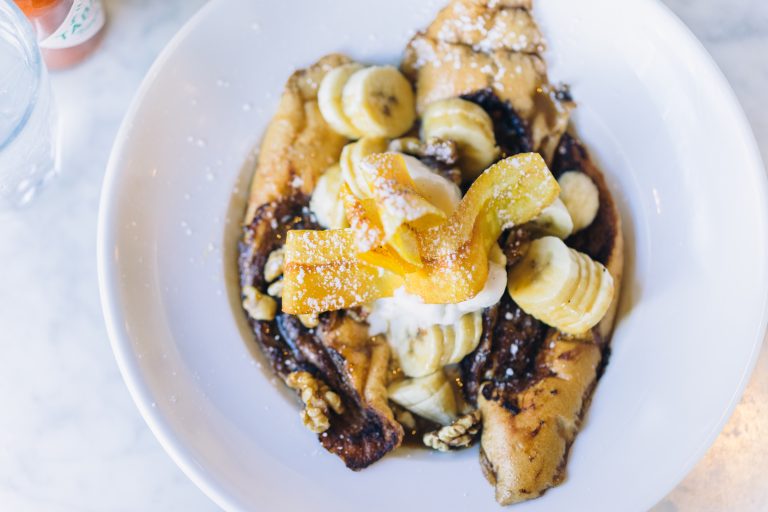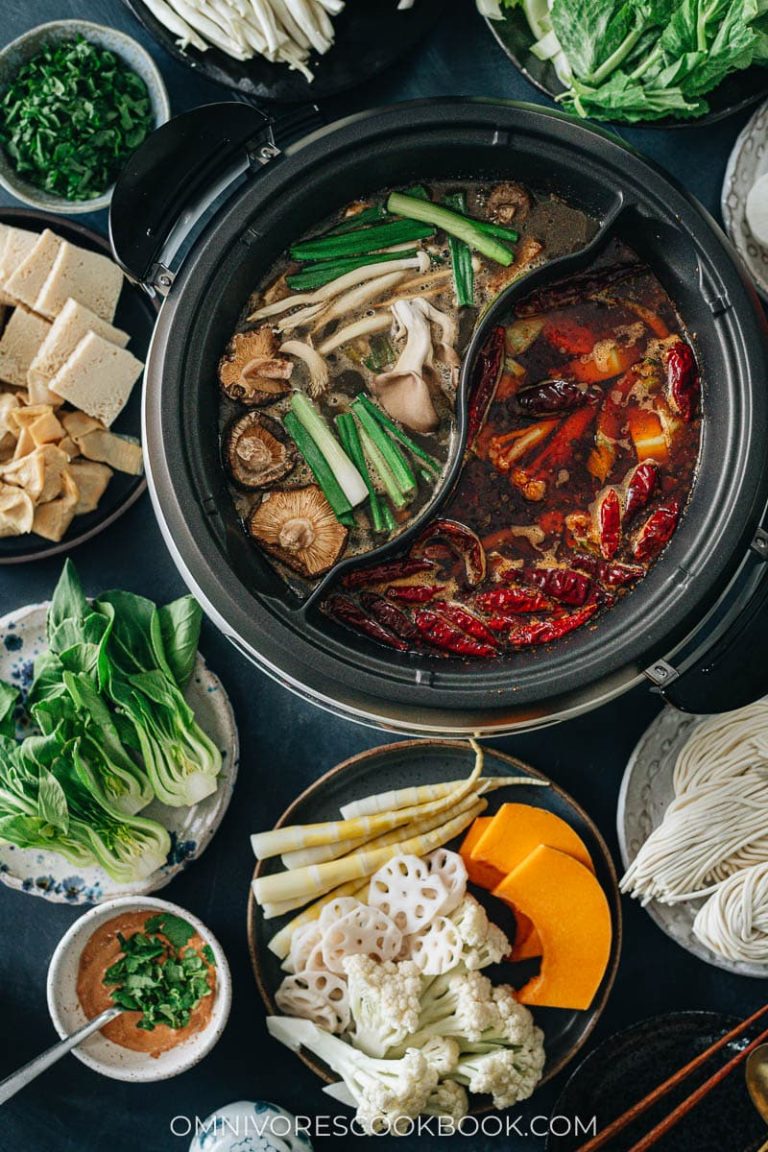Hong Kong Style Chicken Chow Mein: Ingredients, Variations, and Serving Ideas
Hong Kong Style Chicken Chow Mein has roots in the post-World War II period. Cantonese immigrants began popularizing noodle dishes in Hong Kong’s burgeoning food scene during the 1950s and 1960s. Influenced by Cantonese culinary techniques, chefs invented a variety of noodle-based dishes, featuring different meats and vegetables. Chicken Chow Mein emerged as a favorite, blending tender chicken, crispy vegetables, and flavorful noodles. The dish quickly gained popularity, becoming a staple in Hong Kong’s bustling dai pai dongs (open-air food stalls).
Cultural Significance
In Hong Kong, Chicken Chow Mein symbolizes a blend of tradition and modernity. It’s a popular item that represents the city’s vibrant street food culture. Families and individuals frequently enjoy Chicken Chow Mein at food stalls or during family gatherings. It’s both an everyday meal and a special dish for festivals and celebrations. Chinatown communities around the world embrace Hong Kong Style Chicken Chow Mein, making it a global representation of Hong Kong’s culinary heritage.
Key Ingredients Used in Hong Kong Style Chicken Chow Mein
Types of Noodles
Egg noodles form the base of Hong Kong Style Chicken Chow Mein. These noodles are yellow and slightly chewy. Fresh egg noodles, found in Asian grocery stores, work best for an authentic texture. If unavailable, dry egg noodles offer a decent alternative. Ensure the noodles are not overcooked to maintain that desired springy bite.
Chicken and Other Proteins
Chicken serves as the primary protein. Use boneless, skinless chicken breasts or thighs for tender, juicy results. Thinly slice the chicken to promote even cooking, ensuring it remains succulent. In some variations, shrimp or beef can substitute or complement the chicken, offering alternative protein options. Marinate proteins briefly in soy sauce, sesame oil, and cornstarch to enhance flavor and tenderness.
Vegetables
Crisp vegetables add texture and color to the dish. Common choices include bell peppers, carrots, and bean sprouts. Bok choy, napa cabbage, and snap peas often feature as well. Cut vegetables evenly to ensure they stir-fry quickly and retain their crunchiness.
Sauces and Seasonings
A savory sauce blend elevates the dish. Commonly used elements include soy sauce, oyster sauce, and hoisin sauce. These provide a rich umami flavor. Incorporating garlic, ginger, and scallions enhances the aroma and depth of taste. Balance the flavors with a bit of sugar and white pepper. Add a splash of sesame oil at the end for a fragrant finish.
Synchronize these key ingredients to create a harmonious blend of flavors and textures in your Hong Kong Style Chicken Chow Mein, making each bite a delight.
Cooking Techniques
Stir-Frying Methods
Use high heat for effective stir-frying, ensuring the wok is preheated before adding ingredients. This technique sears the chicken quickly, locking in moisture and flavors. Cook chicken pieces first for about 2-3 minutes until golden, then set aside. In the same wok, stir-fry the vegetables like bell peppers and bok choy for 1-2 minutes to maintain their crunchiness. Incorporate the marinated chicken back into the wok, followed by the pre-cooked egg noodles and sauce blend. Toss everything for a few minutes until well mixed and heated through, achieving a cohesive dish full of rich flavors.
Tips for Achieving the Perfect Texture
To achieve the perfect texture in Hong Kong Style Chicken Chow Mein, boil egg noodles until al dente, then rinse under cold water to stop further cooking. Ensure vegetables remain crisp by not overcooking them in the stir-fry process. Incorporating cornstarch into the chicken marinade helps tenderize the meat and creates a silky texture when cooked. Avoid overloading the wok to maintain high heat and proper stir-fry conditions, which prevents ingredients from becoming soggy. Finally, toss all components quickly and efficiently to blend flavors without compromising texture.
Variations of Chicken Chow Mein
Regional Differences
Chicken Chow Mein, while rooted in Hong Kong, exhibits variations across different regions. In Hong Kong, the dish typically uses egg noodles, which are stir-fried to a slightly crispy texture. The sauce is a blend of soy sauce, oyster sauce, and other seasonings, creating a savory umami profile. Additionally, local vegetables like bok choy and bean sprouts add fresh crunch to the dish.
In mainland China, some regions prefer adding a touch of sweetness to the sauce or incorporating more robust heat through chili oil. Szechuan Chicken Chow Mein, for example, includes Szechuan peppercorns, adding a numbing spiciness. Meanwhile, in Taiwan, you might find the dish includes black bean sauce, giving it a distinct, rich flavor.
Adaptations Abroad
Outside of Asia, Chicken Chow Mein also adapts to local tastes and ingredient availability. In the United States, the dish often integrates bell peppers, celery, and carrots—common American vegetables. Soy sauce might be sweeter, and the noodles are sometimes softer, catering to different palates.
In the United Kingdom, Chicken Chow Mein usually features a thicker sauce, sometimes incorporating ingredients like hoisin sauce or even Worcestershire sauce. Vegetables often include peas and other local produce.
Another adaptation is seen in Australian versions, where barbecued chicken might be used instead of marinated chicken. The dish often has a more pronounced taste of garlic and ginger, reflecting local preferences.
Regional differences and international adaptations provide variety in Chicken Chow Mein, yet each version maintains the core elements: noodles, chicken, and a balanced, savory sauce.
Serving and Presentation
Traditional Garnishes and Side Dishes
Adding traditional garnishes enhances both the flavor and appearance of Hong Kong Style Chicken Chow Mein. Green onions, sliced thinly, provide a fresh, crisp bite. Scatter sesame seeds on top for a subtle nutty flavor. Thin strips of red bell pepper or carrots offer a splash of vibrant color, making the dish visually appealing.
Side dishes that pair well with this chow mein include steamed dumplings and spring rolls. These sides complement the noodle dish with their contrasting textures and flavors. Another popular choice is a bowl of hot and sour soup, which adds a tangy and slightly spicy contrast to the savory chow mein.
Modern Serving Suggestions
For a contemporary twist, serve Chicken Chow Mein in individual bowls for an elegant presentation. Use a drizzle of sriracha or hoisin sauce to add extra depth of flavor. Garnish with microgreens or cilantro for a fresh, modern touch.
Incorporate protein variations like shrimp or tofu for a unique spin. These alternative proteins offer different textures and tastes while maintaining the dish’s integrity. For a health-conscious option, use whole wheat noodles and add an assortment of vibrant, fresh vegetables like broccoli florets or snap peas.
By combining traditional and modern elements, you create a versatile and appealing serving experience for Hong Kong Style Chicken Chow Mein.
Conclusion
Hong Kong Style Chicken Chow Mein offers a delightful blend of flavors and textures that cater to a wide range of tastes. Its adaptability across various regions highlights its universal appeal and culinary versatility. Whether you stick to traditional ingredients or experiment with modern twists, this dish promises a satisfying and memorable meal. Embrace the rich heritage and global influences of Chicken Chow Mein in your kitchen, and enjoy the endless possibilities it brings to your dining table.





